The Spitfire: Building an Accurate Replica
The model is an authentic miniature of the original aircraft flown by Spitfire ace Robert Stanford Tuck in 1942. Its alloy panels and cast metal components reflect the sophisticated construction of the original, which can be finished to represent every detail of the actual Spitfire Mk Vb on which it is based.
Unlike its contemporary, the Hawker Hurricane, which used a conventional structure of wood and metal covered with doped fabric and sheet alloy, the Spitfire was an all-alloy monoplane of advanced design. The airframe was developed by Reginald Mitchell of the Supermarine Aviation Works, designer of world-beating racing seaplanes, in response to an Air Ministry specification for a new fighter aircraft. After Mitchell’s first effort had proved disappointing, it was aborted and the bold decision was taken to come up with a completely new design, powered by an experimental new Rolls-Royce engine, the PV (private venture) XII later to be named the Merlin.
What was to become the Spitfire rapidly took shape in 1934, soon gaining its distinctive double-elliptical wings, an elegant design solution to the problem of accommodating the guns and other equipment in a suitably strong but thin structure. The wing was so remarkably slender that when 20mm cannons were fitted, small blisters had to be added to the upper surface to accommodate the weapons’ drum magazines. Earlier versions of the Spitfire had fabric-covered control surfaces, as these were thought to be lighter to operate. However, when the Mk V was introduced, it was given metal-covered ailerons as standard, after combat experience had shown that the fabric ones tended to lock in high-speed dives.
The original prototype, K5054, first flew on 5 March 1936. Initially, it was flown with its alloy skin unpainted, while the airframe was being tested, modified, and examined. Later on, a light blue-grey finish was applied by the Rolls-Royce paint shop in Derby, and every surface was carefully smoothed. This facilitated experiments to find out whether streamlined, flush-finished rivets would increase the top speed enough to justify the extra complication during production. An unusual method was used. Split peas were stuck all over the aircraft in the positions the rivets would be on production aircraft and then removed in stages to see whether this improved the performance. The results showed that flush rivets were desirable on the wings but unnecessary on the lengthwise joints in the fuselage which was the plan adopted in production and reflected in the riveting pattern of the model.
Operational aircraft required camouflage to make them less visible from above in flight and on the ground. The first Spitfires to go into service were painted with a pattern of Dark Earth and Dark Green on top of the wings and on the upper fuselage. This was designed to break up the aircraft¹s profile. However, to make it easy for anti-aircraft artillery batteries to identify friendly fighters, the underside of the early Spitfires was painted half black, half white, along a dividing line from nose to tail although sometimes the whole of the fuselage underside was white. Later on, the entire underside was painted light blue Sky, duck-egg blue or light grey to make the aircraft less visible from below during dogfights.
Mitchell’s original design had called for the retracted undercarriage to be fitted with hinged flaps covering the bottom of the wheels to streamline the underside of the wings, but the flaps proved troublesome and it was decided to remove them after tests showed that this did not affect the performance noticeably. As a result, the exposed lower halves of the wheels remained visible in the recesses underneath the wings, as on the model.
There were several other paint schemes for specialist variants. Reconnaissance Spitfires, which carried cameras to photograph enemy territory, were stripped of guns and other non-essential equipment, streamlined so they could fly as high and fast as possible, and painted with special camouflage. High-altitude reconnaissance aircraft were painted medium PR (photo reconnaissance) blue overall. Surprisingly, low-level reconnaissance aircraft were often painted light pink. This unusual colour was chosen because it would hide the aircraft at sunset and sunrise, when a background of low cloud takes on a pinkish hue, but it proved to work almost as well during full daylight. Aircraft that fought on the North African front would be given desert camouflage and night fighters were painted all-black.
For general service aircraft stationed in Britain, prewar regulations dating back to October 1937 set out the layout of camouflage pattern for each type flown by the RAF. Single-engined, single-seater, monoplane fighters, such as the Spitfire, were allocated two standard patterns for the Dark Earth and Dark Green camouflage. These were dubbed A and B camouflage, and were mirror images of each other. Factories generally applied the A pattern to aircraft with odd serial numbers, and used the B for even ones. This practice was confirmed by official Air Ministry orders in 1939, although the different aircraft manufacturers sometimes applied the rules inconsistently.
The underside and propeller spinner were painted brown, and green camouflage was applied to Spitfires throughout the Battle of Britain and into the first half of 1941. However, when RAF policy switched to attacking enemy installations in Belgium and France, its aircraft had to fly across the Channel or North Sea, where the brown areas of camouflage stood out against the waves. Because of this, on 15 August 1941, the Air Ministry ordered areas of Dark Earth camouflage to be changed to dark Ocean Grey, as a scheme of grey and green proved to work equally well over land or sea. Sky paint was retained for the spinner and the fuselage band near the tail, while a thin yellow strip was added along the leading edge of the wing to aid recognition. New aircraft received this paint scheme in the factory.
Operational aircraft were repainted in the field, or as they went through repair depots. The finish on the model of Stanford-Tuck’s Mk Vb is an example of this repainting program, from a time when a shortage of the new paint meant that colours might have to be mixed up from available stock. Some aircraft, Tuck¹s included, were painted with Dark Sea Grey or an improvised alternative produced by mixing Night and White.
The RAF’s identifying Type A roundel, consisting of concentric red, white and blue circles, was painted on the underside of the wings and the sides of the fuselage. To help those on the fuselage stand out from the camouflage scheme, they were surrounded by a narrow yellow ring, and the result was called the Type A1 roundel. Roundels on the top of the wing only had the red and blue discs (Type B roundels), as this helped to camouflage the aircraft particularly when it was parked on a grass airfield. Later on, during 1942, when the white band on the Type A and A1 roundels became narrower, the resulting markings were called the Type C and Type C1.
RAF aircraft normally carried two sets of numbers and lettering. The first was the aircraft¹s own individual serial number, which appeared in small black or dark-coloured characters near the tail on both sides of the fuselage. As this related to its date and place of manufacture, this was retained throughout the service life of the airframe, unless one aircraft was cannibalised from the remains of two. The second designation was a much larger three-letter code (very rarely, four letters were used) that appeared in white or light-coloured characters on both sides of the fuselage, straddling the roundel.
These letters were made large and easy to spot so that pilots could identify their fellow aircraft when flying in formation. The first two letters showed which squadron the aircraft belonged to. For example, 257 Squadron used ML from May-June 1940, DT from June 1940-May 1941 and FM for the rest of the war, as the RAF changed the squadron code whenever it thought the Germans had managed to work out which codes denoted a given unit. Not only did this mean that aircraft might be repainted several times during their service life, but also that an aircraft’s markings would be changed whenever it was assigned to a new squadron.
The final letter was an alphabetic code identifying each individual aircraft: A, B, C and so on. So a pilot belonging to 257 Squadron who was assigned to fly G for George during the Battle of Britain would have taken off in an aircraft with DT-G on its sides. (Squadrons normally only had a maximum of 18 aircraft, so single letters were enough to identify them and in the rare cases that a squadron had more than 26 aircraft, the lettering would start again with AA.)
The only exceptions to this rule were Wing Commanders’ aircraft. These officers were in charge of a Wing comprising two or more squadrons (based on a single airfield, or at nearby ones), and as their own fighter flew with more than one squadron, it could have its own distinctive personal markings. When Robert Stanford Tuck, pilot of your model Spitfire, was Wing Commander of the Biggin Hill Wing, he had his initials RS-T painted on his Spitfire. Similarly, the renowned Douglas Bader had the letters D-B when he commanded the Wing flying from RAF Tangmere, while fellow Spitfire ace Johnnie Johnson, based at Kenley, flew JE-J.
The serial number of Tuck’s Spitfire Mk Vb is generally believed to be BL336 although the number was covered up during the repaint, and some sources claim that his aircraft was actually P8783. BL336 was built at the huge Castle Bromwich Shadow factory known as CBAF, which was set up by Morris Motors, using the skills of the Birmingham car industry to increase aircraft production and disperse the vulnerable military factories across the country. Its airframe, like that of its fellows, was fitted with a Rolls-Royce Merlin 45 engine, a 1,515hp variant of the 12-cylinder supercharged power unit that first appeared in January 1941.
Propellers, known as airscrews at the time, were expensive, precision-made items (the production Spitfire’s cost almost a fifth as much as its whole Rolls-Royce engine) and had a major effect on performance. The Spitfire flew with several different types of propeller as the fighter was developed and its speed increased. Over the years, the number of blades varied from two to five and some aircraft were even given twin, contra-rotating three-bladed propellers. Not only this, but the engineering of the blades themselves also became more complex.
The prototype Spitfire was initially fitted with a two-bladed wooden propeller with fixed blades, which had to be carefully reshaped when the original profile was found to be limiting the top speed. As an experiment, the prototype’s propeller was changed for a four-bladed one, but when this gave no improvement, the two-bladed type was refitted. Later on, a de Havilland three-blade, two-pitch propeller was tried at various pitch settings.
The best propellers available in the late 1930s were fitted with a variable-pitch gear mechanism that rotated the blades to the most efficient angle to suit the power of the engine. In Britain, the first examples of this type of propeller were built by the de Havilland company, which had acquired a manufacturing licence from the American inventors. The RAF went on to develop and fit its own version, made by Rotol, a joint venture between Rolls-Royce and Bristol. The introduction of this three-blade constant-speed propeller added 7,000 feet to the Spitfire’s operational ceiling, cut take-off distance by a third and greatly improved the rate of climb. However, very few of the early Spits had these propellers, which would only fit a special version of the Merlin engine, and most had plain wooden propellers.
In 1940, with the threat of war in the skies of Britain looming, it was important for the defending fighters’ performance to match their fastest rivals particularly the Messerschmitt Bf109. So in June 1940, the government asked de Havilland to convert all RAF fighters in the field by fitting variable-pitch propellers, starting with the Spitfire, then moving on to Hurricanes and other types. Despite a de Havilland clerk supposedly claiming “We shall probably never be paid for this work”, conversion began immediately and by 20 July, all operational Spitfires had been upgraded, their new propellers being recognisable by having a more pointed spinner than the Rotol version. By the time that the Mk Vb went into production, three-bladed constant-speed Rotol or de Havilland Hydromatic propellers were a standard fitting, and this is mirrored in the model, which has an internal gear mechanism allowing the pitch angle of the blades to be varied by hand.

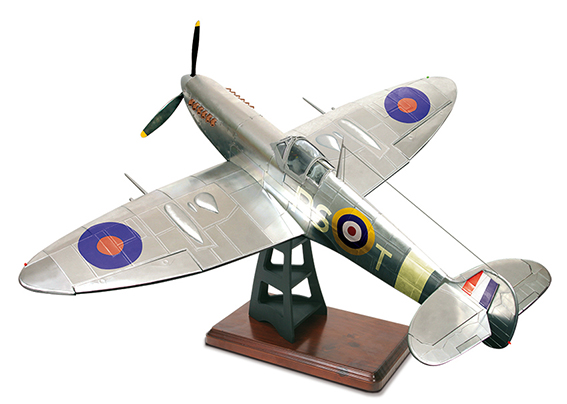
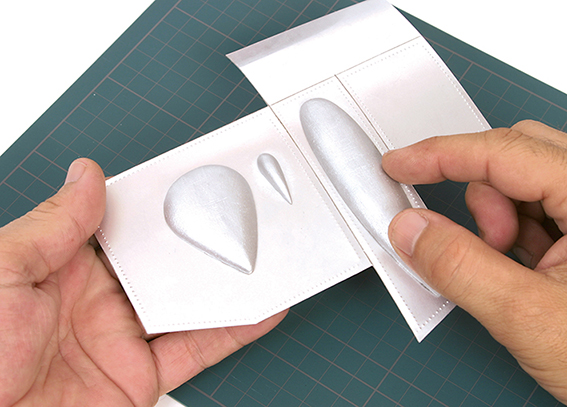
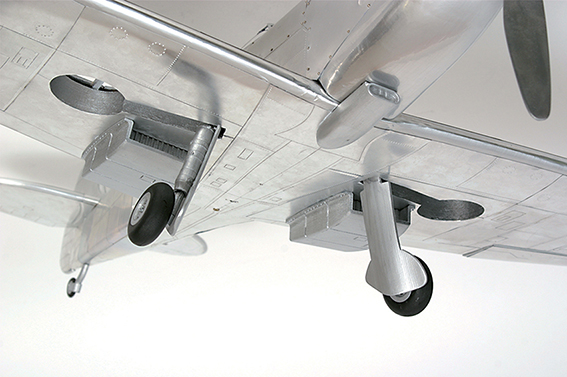
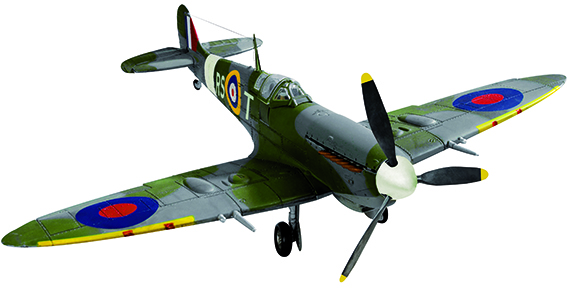


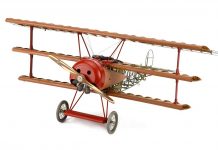
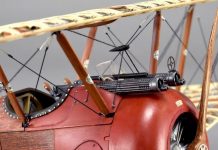
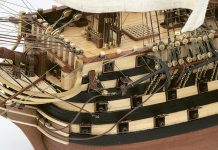
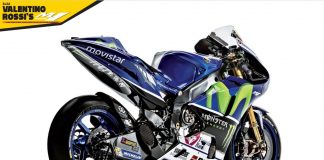


Looking forward to building this model, especially that it has a link to Spitfire ace Robert Stanford Tuck!
We can’t wait to watch your amazing build diary!
Are these pictures of the actual model? ‘Cos if they are its riddled with inaccuracies in both detail and design, For 800 odd quid its shocking bloody rubbish and frankly I wouldn’t waste tuppence on it!
has anyone even botherede to answer this comment as I was thinking of buying this for my brother but not only do I not wqant to waste my money but done want to insult his intelligence due to the fact htat he was in the observers corp and would know if it meats with the right spec so any one who can answer this iit would be most welcom.
I only came to the sire as it is now being advertised on tv and it lead me to this site I was a bit shocked to find out the thing had been on the go since last year and the competition has now been and gone is this a sign of the things you can expect from this company?
To answer a few questions that De Agostini are noticably choosing to ignore: This is not and accurate, nor authentic replica of any mark of Spitfire that ever flew, let alone Bob Stanford Tucks Mk.Vb, the inaccuracies are numerous. Twin underwing radiators, not fitted to the Vb, these only appeared with the Mk.VII/VIII and IX which were fitted with the later ‘two-stage’ Merlin engine and also had a longer engine cowling and different weapons fit, the cockpit is incorrect, the undercarriage is incorrect, the engine cowling is poorly shaped and the spine of the fuselage is incorrect, the bulges and fairings on the upper wings are a combination of Mk.IX and Mk.22 fittings… I could go on but this thing is so painful to look at that I really can’t be bothered, if all you want is a desktop model that looks like a Spitfire and you’ve got 800 quid to burn go for it, if you want a model of a Spitfire, save yourself £700 and track down Tamiyas 1/32nd scale plastic kit, it’ll be easier to build and will be a far more accurate model. How they ever got the RAF to sign of on this abomination is beyond me!
Why does this Spitfire-model have 2 radiators if it represents a Mk.Vb?
Why are the fabric covered parts (ailerons, rudders) made of metal?
I am interested to hear the responses regarding the inaccuracies on this model. I am seriously considering signing up to it but for the price I am not going to waste that sort of money on a company that simply chooses to ignore any form of criticism. I eagerly await your reply before I subscribe